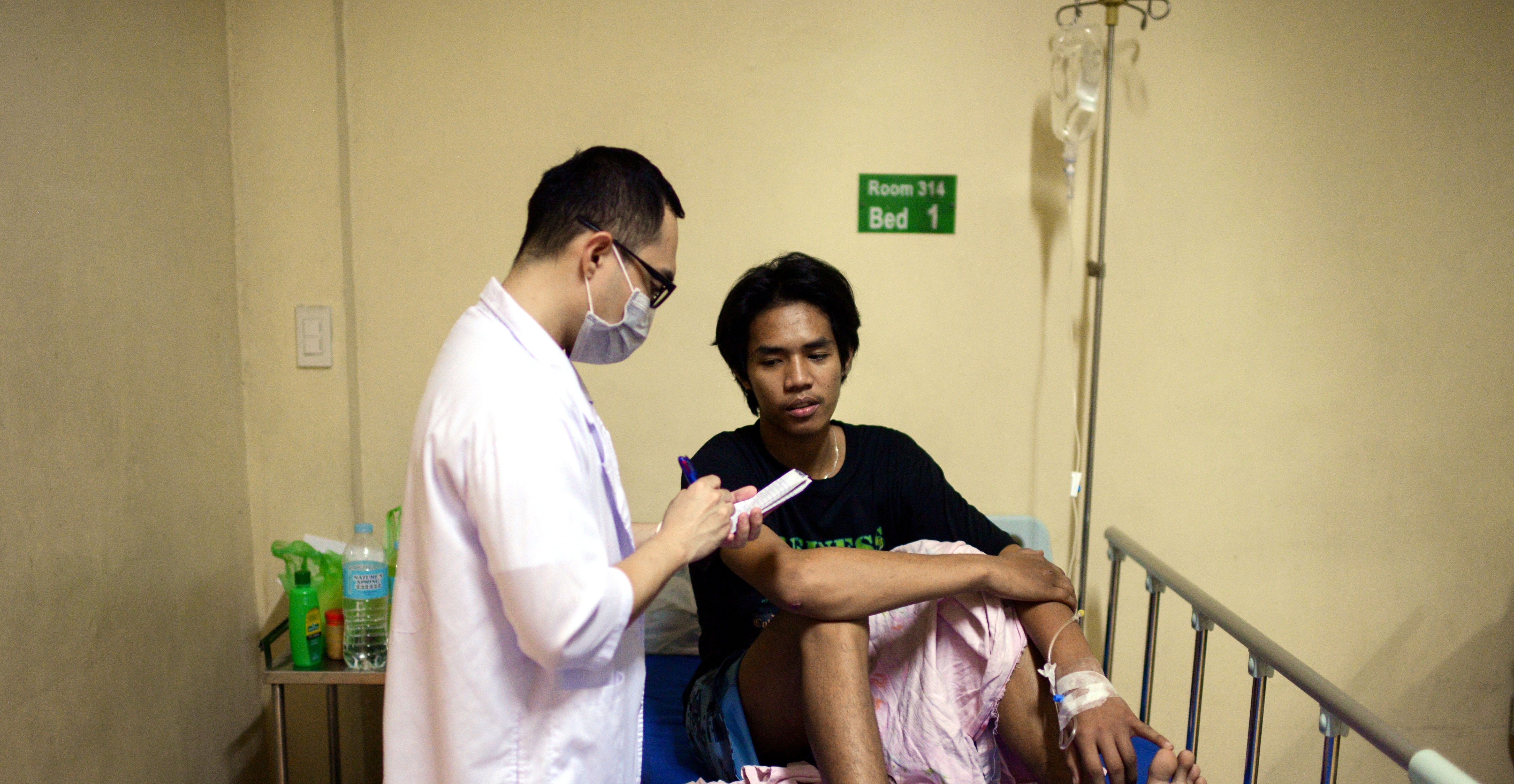Scientists are working on a cheaper way to produce medical oxygen

Oxygen is in short supply. Image: REUTERS/Sebastian Castaneda
- Due to the COVID-19 pandemic, oxygen is now a luxury in most low and middle-income countries, writes molecular engineer David Fairen-Jimenez.
- Developing countries lack the infrastructure to produce liquid oxygen and easily and cheaply transport it to a hospital.
- Fairen-Jimenez explains how he and other scientists are looking at an alternative way of “making” oxygen using concentrators to remove nitrogen.
People might once have considered oxygen a human right. But the pandemic has revealed that access to oxygen – in a pure form, for medical use – is a luxury in most low and middle-income countries.
Getting access to pure oxygen for medical treatments is a complicated, expensive and often very dangerous business. The current situation in India is a harsh reminder of this issue. The second wave of COVID-19 has hit the country hard, the total number of deaths has just passed the 200,000 mark. Oxygen is in short supply.
Because of the current emergency, Indian citizens have turned to the black market to purchase oxygen way above its regular price.
This has happened partly due to the way oxygen is produced, stored and transported around the world. That’s why scientists like me are working to find a cheaper alternative.
Bottlenecks
Oxygen is mostly obtained from liquefied air. Engineers turn the air we breathe into a liquid, using a combination of processes that cool down gases until they condensate. Once they’ve managed to liquefy the mix, they use distillation – the same process used to make whisky and gin – to separate air into its different components, oxygen among them.
This process requires enormous amounts of energy and huge industrial facilities, so it’s limited to just a few areas in the world, most of them in the global north. Liquid oxygen must be stored and transported under great pressure, creating serious logistical issues and safety concerns – oxygen is really explosive.
This means the main bottleneck of oxygen production is, precisely, bottles. The US relies on heavy-duty pipes to transport pressurised oxygen. In Europe, transport is mainly through liquid oxygen carried in big tanks. For lower-income countries, distribution is done in bottles.
But the oxygen bottle market is cornered by only a handful of chemical companies. Using bottles also adds another layer of safety concerns, as handling them correctly requires several precautionary measures and proper training. Developing countries therefore lack both the infrastructure required to produce liquid oxygen and that to easily and cheaply transport it to a hospital.
Out of thin air
Another way of “making” oxygen is using concentrators, devices that selectively remove nitrogen – the gas that makes up 78% of our atmosphere – using a series of membranes, porous materials and filters. These started being produced in mid-70s, and the technology is very well established.
These devices turn air into a stream of oxygen-enriched gas, typically above 95% (the rest is formed of mostly argon). This is usually good enough for respirators and ventilators. The benefit of a concentrator is it can be produced as a small device to be used in hospitals or care homes. Commercially available concentrators exist now, but they are expensive and difficult to produce in developing countries.
This is why scientists like me are looking for solutions. My team studies new types of materials that store and separate gases, some of which provide potentially affordable solutions for devices such as oxygen concentrators. We develop two main types of materials – zeolites (crystals of silicon, aluminium and oxygen) and metal-organic frameworks (usually called MOFs). Both are highly porous materials; you can imagine them as miniature, molecule-sized sponges.
Like sponges, these porous materials adsorb more fluids than you’d intuitively imagine. Although the millions of pores inside zeolites and MOFs may seem tiny, their total surface area is monumental. In fact, one gram of certain record-breaking MOFs feature a surface area of over 7,000 square metres.
Tiny amounts of zeolites and MOFs can store huge amounts of fluids, often gases, and they have been used in gas storage, purification, carbon capture and water-harvesting.
Some of my team, partnering with the engineering company Cambridge Precision, and the Centre for Global Equality, have started looking into whether they can be used to store oxygen. We’ve developed an initial prototype that works. We hope to have a final prototype in place in two months time, and after this we will need to seek medical approval.
The process
The principle is quite simple. We have an aluminium cylinder full of porous materials and we circulate a stream of air through it. This purifies the oxygen up to 95% – with the remaining being mostly argon. Nitrogen is trapped in the zeolite because of the way the electric charge is distributed in nitrogen atoms, meaning it interacts more strongly with the zeolite’s electric field. Oxygen and argon are not.
The nitrogen therefore stays trapped inside the millions of tiny pores, and we empty them later after storing our oxygen.
What's the World Economic Forum doing about diversity, equity and inclusion?
Usually, we commercialise our porous materials through Immaterial, a spin-out of the University of Cambridge. Yet, making huge profits selling oxygen in a pandemic seemed immoral. In Africa, for example, oxygen is five times more expensive than in Europe and the US. Our team and Immaterial therefore partnered up with other scientists in Cambridge to create the Oxygen and Ventilator System Initiative, OVSI, with the aim of advancing and manufacturing affordable oxygen treatments.
We hope the advantages of a cheap oxygen concentrator device will outlive the pandemic. Oxygen supply is key to treat childhood pneumonia and chronic pulmonary diseases – both conditions that globally kill more people than AIDS or malaria. Everyone should have access to oxygen, and technology like ours could one day help provide that access.
Don't miss any update on this topic
Create a free account and access your personalized content collection with our latest publications and analyses.
License and Republishing
World Economic Forum articles may be republished in accordance with the Creative Commons Attribution-NonCommercial-NoDerivatives 4.0 International Public License, and in accordance with our Terms of Use.
The views expressed in this article are those of the author alone and not the World Economic Forum.
Stay up to date:
COVID-19
Related topics:
Forum Stories newsletter
Bringing you weekly curated insights and analysis on the global issues that matter.
More on Health and Healthcare SystemsSee all
Mille Sofie Stenmarck Korsgaard and Daniel Holth Larsen
November 20, 2025






